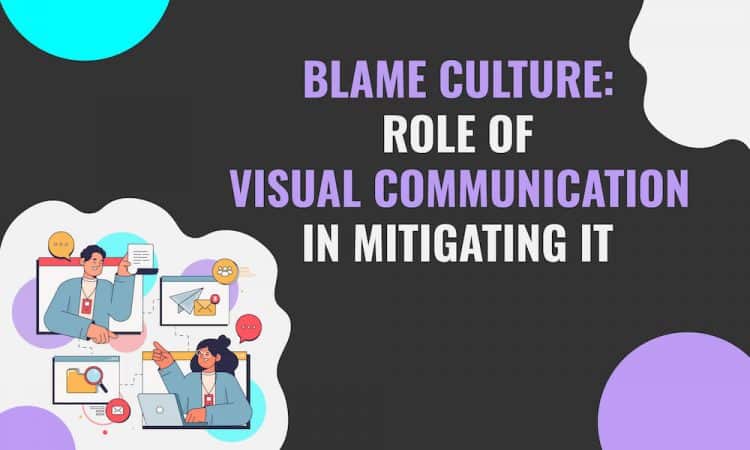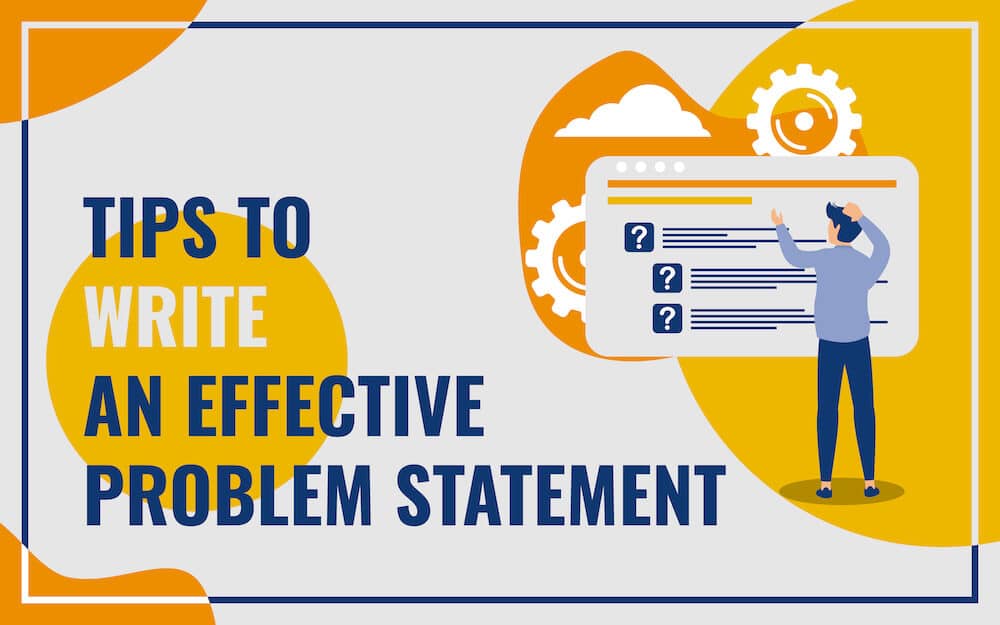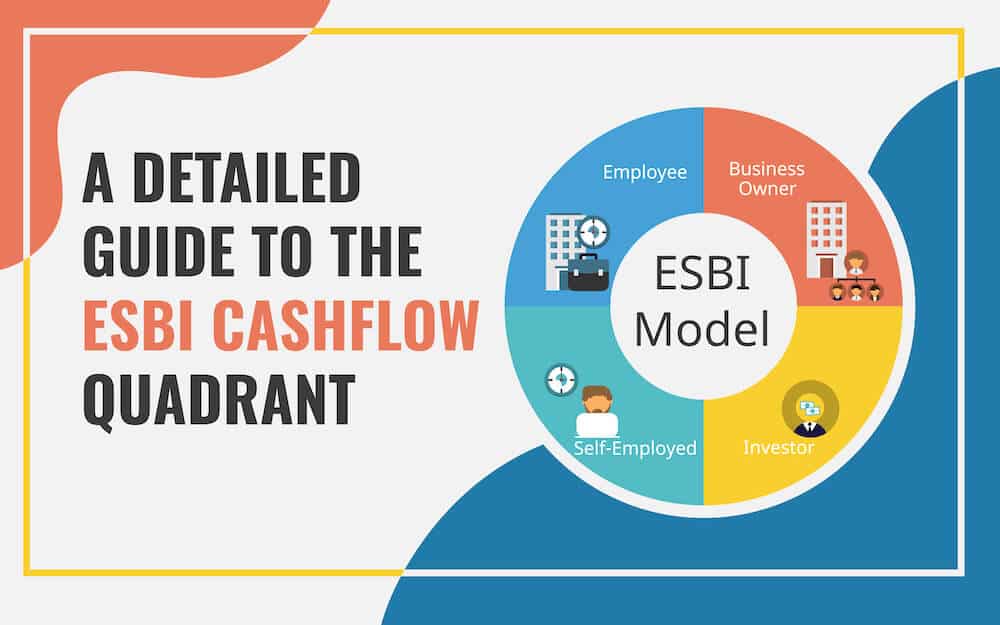
Has it ever happened to you that you committed a mistake, and instead of admitting it, you shifted blame to others for protecting your ego or self-esteem, safeguarding yourself from punishment, or for any other reason? We are sure you have experienced this guilt at some point in your life!
Humans are naturally wired to refrain from their irresponsible and wrong attitudes, words, and actions and assign the blame to others to dodge repercussions. When done repeatedly without regret, blame-shifting turns to emotional abuse. This habit badly affects the blame shifter’s relationship, career, and social life.
Many times, people fail to understand their faults and get trapped in the blame game unconsciously. In such a scenario, blame shifters often deceive themselves. These people can be saved from getting victimized by providing adequate support to enhance their emotional maturity.
Do you want to learn more about blame culture, how it works, its signs and implications, ways to overcome it through visual communication, and other crucial aspects? We have covered every minute detail in this article. Read on!
What is Blame Culture: Understanding it With An Example
A blame culture is an environment characterized by stonewalling, scapegoating, defensiveness, contempt, and criticism.
Let’s understand the blame culture with an example. Assume a scenario – you are a project manager, and you have to submit a new client proposal within 3 days. You have involved your team in this work, and with the relentless efforts of your team, you managed to prepare a great-looking proposal and submit it on time. You thank team members for their contributions. You are confident that you will win the project.
After a week, the client sent you this email: “We appreciate the efforts you have put into preparing the proposal; we really liked it. However, we found a discrepancy in your supporting documents and the numbers. So, this time, we are assigning this project to someone else. Hopefully, we will work together in the future.”
Frustrated and upset, you call your team and yell at them for not checking the proposal correctly. All of a sudden, your thankfulness transforms into hatred. Owing to your designation and power, you shifted your mistake and irresponsible behavior to your team. This is called blame-shifting, and the environment you create with your attitude is called blame culture.
Blame Culture Psychology
According to psychology, there are two locus of control – internal and external. Our locus of control influences our control over life events or outcomes.
People with a dominant internal locus of control have a strong sense of self-efficacy, and they are less influenced by others’ opinions. They face challenges with confidence.
Contrary to this, people with a dominant external locus of control believe in chance or luck for success and feel powerless or hopeless when exposed to challenges. They blame external forces for their situations or circumstances. In a nutshell, these people are blame-shifters.
The internalized feelings or emotions of non-performance, inability, incapability, or failure stimulate the blame-shifting behavior. Rather than recognizing their incompetence and working on it, people adopt a defense mechanism and tend to blame their colleagues, friends, partners, or external factors or situations for every wrong thing happening in their personal or professional lives. It makes them feel better. However, with time, this behavior intensifies and becomes abusive.
The Roots of Blame Culture: Exploring its Origins and Evolution
The blame culture originates from various social, psychological, and organizational factors. Below are 3 main reasons for its evolution-
1. Human Tendency
As humans, we generally feel insecure and threatened when we commit a mistake. We feel shame and guilt in admitting our wrongdoings. So, we tend to cope with these emotions by shifting the blame on something or someone else.
2. Blaming Someone is Effortless
Rather than identifying and fixing the root causes of a mistake, shifting the blame of the fault to others is easy and quick. This effortlessness fosters a blame culture.
3. Culture of Punishment
Organizational policies and societal norms of punishing people for mistakes make people reluctant to accept their mistakes and learn from them. It creates an environment where individuals are likely to redirect their irresponsible behavior to others.
Recognizing the Signs of a Blame Culture in the Workplace
How do you identify blame culture? Well, there are a few signs that give you a clue that blame culture has started emerging in your organization-
1. Change in Working Practices
- The productivity of team members slows down. They defer complex tasks and prefer easy tasks.
- Team members dither open communication and collaboration due to fear of blame. They feel demoralized and refrain from expressing differing views, opinions, thoughts, or concerns due to fear of blame.
- Lack of trust among team members.
- Employees show defensive behavior when facing challenges or receiving feedback.
- Employees avoid taking responsibility.
- Lack of innovation and creativity as employees become unwilling to take calculated risks or propose new solutions or ideas.
- As talented employees choose to leave the organization due to a toxic work culture, there may be higher employee turnover rates.
2. Cultural and Language Cues
- Groups and gossip increase, and bullying appears.
- You will listen to these keywords frequently-
# Someone – for example: “Someone forgot to turn off the projector before leaving the conference room.”
# I had to – for example: “I had to put in extra effort because of you.”
# But – for example: “But I have no idea?”
# They/he/you made me – for example: “He made me behave rudely.”
# Why – for example: “Why did you choose this approach of completing the task?”
# No one – for example: “No one bothers to take their consent.” - A culture of debate emerges wherein people try to score more points by figuring out flaws or lack in other people’s ideas, thoughts, or arguments.
- Negative consequences, reprimands, or punishments are prevalent when errors or mistakes occur, creating an environment of fear.
3. Problematic Manager
- The manager refuses to accept the emergence or prevalence of blame culture in the team.
- Inappropriate delegation of work that results in junior, untrained, or newer employees being blamed for problems/issues/mistakes.
- Instead of assuming responsibility, managers push it down the chain.
- Instead of giving constructive feedback, supervisors give harsh comments to team members during review sessions or one-to-one meetings.
- The manager shows anger at small mistakes of an individual employee in front of the entire team.
- The manager covers failure by shifting it to the incompetence of team members.
What is the Impact of Having a Blame Culture in the Workplace?
Blame culture is toxic. It has detrimental effects on both employees and the organization. Let’s discuss how it influences the overall growth and success of a company.
a). A Culture of Fear
Blame culture creates an environment of distrust, anxiety, and fear, making employees constantly afraid of being blamed for problems or mistakes. In such a scenario, they feel hesitant to report errors, which diminishes their overall job satisfaction.
b). Deterioration of Accountable Behaviors
A blame culture has a ripple effect. Those people who were once willing to assume accountability and responsibility focus their attention, time, and energy on learning skills to avoid blame. This lack of accountability obstructs productivity and impacts teamwork and efficiency.
c). Diminishes Team Dynamics
A strong team is one wherein team members trust each other; they communicate and collaborate openly, share knowledge and ideas, and support each other. The scenario is reversed in blame culture. Due to a communication gap between team members, organizations have to deal with project delays and negative business outcomes.
d). Higher Attrition Rate
In a blame culture, talented employees often feel unsupported and undervalued. They feel their skills and abilities are not being utilized to the fullest. As a result, they seek out organizations with an empowering, positive, and innovative work culture. High attrition rates increase the recruitment and training costs of the company.
e). Lack of Creativity and Innovation
Risk-taking behavior is essential for innovation. In a blame culture, people avert risks and avoid suggesting and implementing new ideas and approaches to prevent future repercussions. This, in turn, impedes the organization’s ability to innovate and adapt.
f). Negative Organizational Image
Stressed and worried employees and a lack of innovative approaches directly impact customer service, making the organization less appealing to potential partners, suppliers, customers, or stakeholders. The negative reputation of the company also makes it challenging to attract and keep hold of top talent.
Strategies to Overcome Blame Culture at the WorkPlace
How do you deal with blame culture at work? Well, it can be done by creating a high-performing and healthy work environment in which employees feel valued, encouraged, and supported, and they willingly take ownership, responsibility, and accountability for their work.
Below are a few strategies to stop blame culture-
(i) Understand the Role of Leadership in Bringing Change
A leader plays a pivotal role in bringing change and promoting positivity and optimism in the team. How can you expect employees to take responsibility and accountability if you, as a leader, can’t?
So, lead by example. Instead of criticizing team members for mistakes, involve them in finding the root cause and solution of the problem.
(ii) Improve Communication
Organizations must understand the importance of transparent communication and a secure space for open dialogue to encourage employees to share their ideas, thoughts, knowledge, and concerns. It helps break the cycle of blame-shifting and drives problem-solving, creativity, and innovation.
(iii) Foster Responsibility
Set clear expectations and goals to direct employees on the right path to success. Communicate their roles and responsibilities to make them understand how they can contribute to the business’s growth. It will promote a sense of personal accountability for work and outcomes.
(iv) Encourage Employees to Learn from Failure
Normalize errors, mistakes, and discussions about failure to motivate employees to take accountability for their actions. Highlight the value of learning from setbacks and mistakes. To sum up, make failure a learning moment instead of a blame-shifting event.
(v) Create a Feedback-Rich Environment
Empower employees to share their valuable feedback with their colleagues and management. Also, encourage them to take critical feedback sincerely and positively. Anonymous feedback channels, one-on-one discussions, and regular team meetings can help you cultivate a feedback-rich working environment.
(vi) Implement Performance Management
Set realistic performance targets for employees and provide them with needed support and regular feedback to achieve those targets. Recognize and reward them for their progress and valuable contributions. It will shift their focus to improving their own performance.
(vii) Be Empathetic
As a leader, you must acknowledge that mistakes are inevitable and your team can learn and grow by making mistakes. Listen to your employees and put yourself in their shoes to identify the genuine reason for the error. By practicing empathy, you can better understand your team members’ perceptions and situations and provide them with solutions to handle their problems in a specific way.
(viii) Cultivate Emotional Intelligence
Emotional intelligence is the skill to understand the emotions of other people and manage and control your own emotions effectively. It has four components- relationship management, self-awareness, social awareness, and self-management.
Encourage your employees to develop emotional intelligence and provide them with all the needed support in the process.
In addition to implementing the above strategies, you can create a no-blame culture by encouraging accountability statements/language, delegating the work fairly, nurturing a growth mindset, and providing ongoing training and support to employees.
Role of Visual Communication in Mitigating Blame Culture
By delivering a thought-provoking presentation using a pre-designed Blame Culture PowerPoint template equipped with high-definition visuals, leaders and managers can make a huge difference. Wondering how? Let’s understand!
1. Fosters Clarity and Transparency
When complex methodologies, processes, data, and concepts are presented using infographics, diagrams, flowcharts, and other visuals, it makes it easier for employees to grab the information. You can reduce ambiguity (which is one of the reasons for blame-shifting) by visualizing how problems are solved, decisions are made, goals are achieved, and performance is evaluated. The more clearly and transparently you showcase your data, the more understandable and accessible it will be to the employees. It, in turn, will eliminate the finger-pointing attitude and encourage continuous improvement.
2. Improves Accountability
With the help of hierarchy templates, you can present the roles and responsibilities of each employee, the reporting structure, and the span of control of managers/leaders. The clarity of responsibilities helps employees assume accountability for assigned tasks rather than indulging in the blame game.
3. Process Improvement
In case of any error or mishap, you can use visuals to connect the dots and figure out the root causes of incidents, inefficiencies, bottlenecks, or system failure. It will direct the employees’ focus on developing a problem-solving mindset and improving the process instead of assigning blame to others.
4. Fosters Empathy
You can communicate the impact of blame culture on employees and the organization by presenting relevant case studies and stories in a visually engaging manner. In addition, you can highlight the benefits of an accountable and blame-free work environment. It will drive empathy and encourage individuals to work collaboratively to change the culture.
5. Commitment to Blame-Free Culture
Senior executives, managers, and leaders can communicate their vision and commitment to a blame-free organizational culture using high-definition visual metaphors and graphics. You can also depict a clear roadmap to achieve the vision.
Conclusion
Blame culture is toxic not only for organizations but for society and relationships, too. It hampers collaboration, communication, innovation, and continuous improvement. If not mitigated on time, this culture may lead to negative thought patterns, like anger, hopelessness, pessimism, etc., triggering accelerated cellular aging, low mood, stress, and mental health issues.
Overcoming blame in the workplace is a continuous and ongoing process that requires commitment from employees and organizations. A harmonious, healthier, blame-free, and thriving environment can be created and nurtured by fostering a culture of empathy, accountability, a growth mindset, and constructive problem-solving.
Do you have innovative ideas or tips to overcome blame culture? Let us know your thoughts in the comment section!



